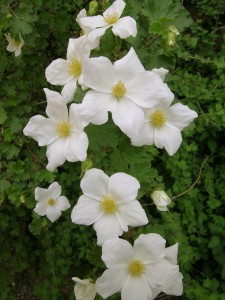Using
Published on March 31, 2015 11:02 am MT Updated on November 21, 2024 9:11 am MT
 The Charles Maurer Herbarium Collection is currently open by appointment only. Please contact the Curator, Jennifer Ackerfield (jennifer.ackerfield@colostate.edu), to arrange a visit to the herbarium.
The Charles Maurer Herbarium Collection is currently open by appointment only. Please contact the Curator, Jennifer Ackerfield (jennifer.ackerfield@colostate.edu), to arrange a visit to the herbarium.
The Charles Maurer Herbarium’s collections are of inestimable scientific and historic value. The collection is dedicated to scientific research, teaching, and public education. Specimens may not, however, be removed from the herbarium.
Principle service activities of the herbarium include identification of plant specimens for faculty members and graduate students engaged in taxonomic , floristic, and ecological studies, and extension personnel studying weed or toxic plant control. Primary users include faculty and students on campus, The Nature Conservancy, the Colorado Natural Heritage Program, The National Park Service, and the U.S. Fish and Wildlife Service.
While visiting the herbarium, please handle the specimens with great care and follow the instructions given below:
1) Please sign the herbarium guest book. Explicitly state the purpose of your visit. Continued access to the herbarium depends on our ability to document its usefulness to the University and scientific community at large.
2) Specimens may not be removed from the herbarium.
3) Please do not remove individual specimens from folders. When withdrawing specimens, remove the entire folder.
4) Folders and specimens must be kept in a horizontal position. Never turn specimens upside down, and do not treat them like the pages of a book.
5) Take folders to an available bench for examination.
6) Dissection or removal of specimen parts is not permitted without express permission from the Curator.
7) Specimens must be returned to the same folder from which they were taken, and in the same order.
8) Make sure to return folders to the proper cabinet in alphabetical order. Misplacing specimens is the most common reason for “lost” specimens and requires considerable effort to relocate.
9) If you annotate specimens, please give them to the herbarium staff so they can be recorded.
10) Specimens may not be left outside of cabinets overnight. These specimens pose a threat to the collection by potentially harboring insects. For your personal collections, you may arrange temporary storage with the herbarium staff.
11) Please clean your work area when you are through and make sure all of the cabinets are closed. A floor broom, bench brush, and dust pan are located in the back of the herbarium by the sink.
12) Do not keep drinks next to herbarium specimens. All drinks must be placed on the counter next to the herbarium workspace in one of the provided trays.
13) Eating food is not allowed in the herbarium under any circumstance.
Please note: Names of Colorado vascular plants are assigned using the most current and widely accepted scientific literature. Consequently, some names used in Harrington’s Manual of the Plants of Colorado, and Weber’s East Slope Flora or West Slope Flora may not have been used to arrange the specimens. It may be necessary to consult pertinent literature or the herbarium reprint collection to determine synonymy. Especially helpful in this regard are Weber’s Catalog of Colorado Plants and Kartesz’s A Synonymized Checklist of the Vascular Flora of the United States,Canada, and Greenland (both located in the herbarium library).
